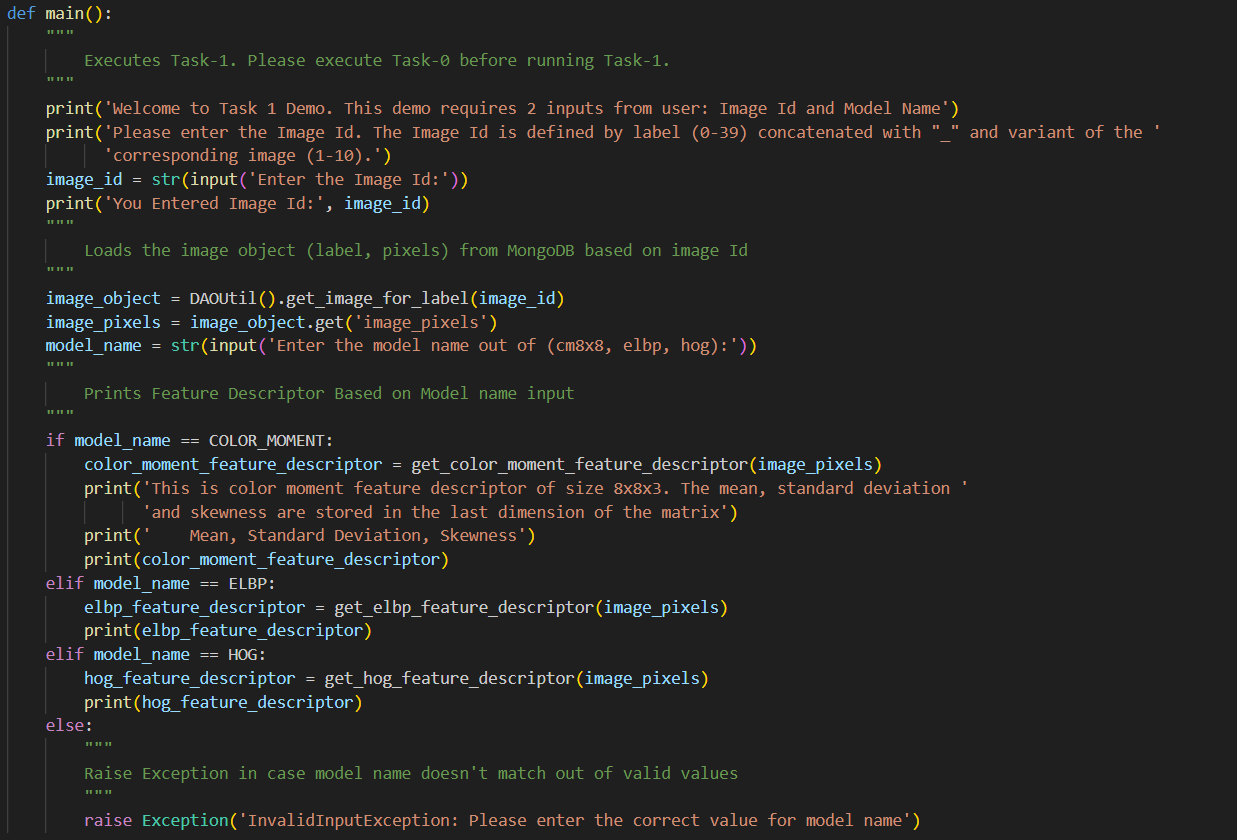Introduction
The "Image Retrieval and Classification with Latent Semantic Features" project focuses on retrieving and classifying images based on their latent semantic features. It incorporates various models and techniques to extract, analyze, and classify images in a meaningful and efficient manner.

Purpose
The purpose of this project is to showcase the capabilities of latent semantic analysis in image retrieval and classification. By extracting latent semantic features from images and applying dimensionality reduction techniques, the project aims to enhance image organization, retrieval, and classification based on their visual and semantic characteristics.

Features
Feature Extraction: The project employs models such as Color Moment, Extended Local Binary Patterns (ELBP), and Histogram Over Gradients (HOG) to extract descriptive features from images. These features provide insights into the visual characteristics of the images and serve as the basis for further analysis.
Latent Semantic Analysis: The project utilizes dimensionality reduction models, including Principal Component Analysis (PCA), Latent Dirichlet Allocation (LDA), Singular Value Decomposition (SVD), and K-Means Clustering, to extract latent semantic features from the image dataset. These techniques reduce the complexity of the feature space and reveal underlying semantic representations of the images.
Image Retrieval: The latent semantic features are leveraged to enable image retrieval based on similarity and relevance. By comparing the latent semantic features of a query image with those of the database images, the project retrieves similar images and ranks them based on their semantic similarity.
Image Classification: The latent semantic features are also utilized for image classification tasks. The project employs classification models such as SVM Classifier, Decision Tree, and Personalized Page Ranking (PPR) Based Classifier to classify images into relevant categories based on their latent semantic representations.
Unique Aspects
Multi-Phase Approach: The project is divided into distinct phases, including feature extraction, latent semantic analysis, image retrieval, and image classification. This modular approach allows for a comprehensive and systematic exploration of latent semantic features and their applications.
User Feedback Integration: The image classification phase incorporates a feedback mechanism that considers user feedback to refine the classification process. This iterative approach allows users to provide feedback on the relevance of the classified images, enhancing the accuracy and user satisfaction.
By leveraging latent semantic features and advanced analysis techniques, the "Image Retrieval and Classification with Latent Semantic Features" project offers a powerful framework for organizing, retrieving, and classifying images based on their latent semantic representations.

